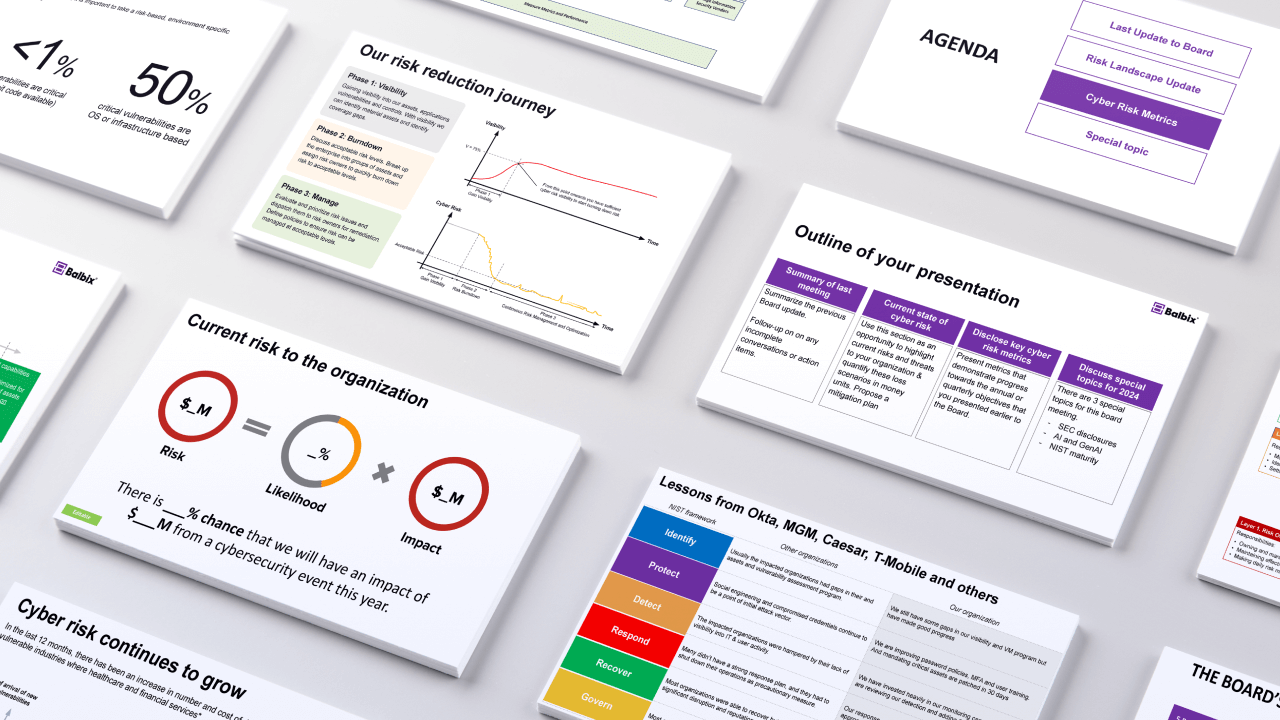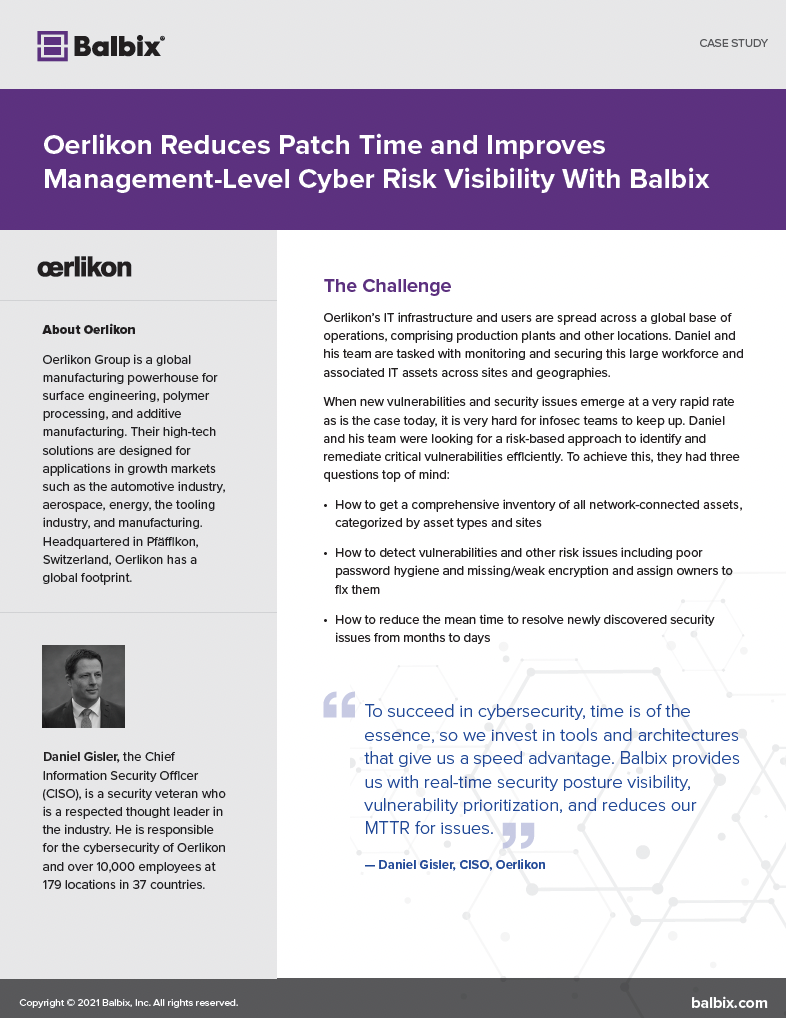A Software Bill of Materials (SBOM) is a detailed inventory cataloging a software application’s components, including all associated identifying details such as versions.
According to the U.S. Cybersecurity & Infrastructure Security Agency (CISA), SBOMs provide transparency into the software supply chain and help organizations track and manage the third-party and open-source components their applications rely on.
Like a Bill of Materials (BOM) in manufacturing, which outlines the raw materials and parts needed to assemble a physical product, an SBOM identifies the software libraries, dependencies, and sub-components used in software development. Knowledge of these components aids in understanding software vulnerabilities, supporting compliance, and enhancing security.
SBOMs & The Software Supply Chain
A software supply chain consists of all the components—both proprietary and third-party—that are integrated into a software product. These include open-source libraries, vendor-supplied code, and other dependencies software developers use to speed up application development.
However, these third-party components may introduce vulnerabilities, making managing and understanding the risks within this supply chain more complicated. By documenting where each component comes from, teams can use an SBOM to address vulnerabilities in their supply chain more effectively.
What Does an SBOM Include?
An SBOM contains key data that helps identify and track software components. Typically, it includes the following:
- Component name and version: Identifies the software or library.
- Origin or source: States whether it’s open-source or proprietary.
- Licenses: Specifies any legal agreements governing the component’s use.
- Supply chain relationships: Highlights connections between components and sub-components.
An SBOM-related concept is the Vulnerability Exploitability eXchange (VEX). A VEX document is an optional attestation, a form of security advisory indicating whether a product or products are affected by known vulnerabilities. Whether and when to issue VEX information is a business decision for most suppliers and possibly a more individual decision for independent open-source developers.
The U.S. Executive Order 14028 mandates SBOM use in federal agencies to bolster cybersecurity. The National Telecommunications and Information Administration (NTIA) has outlined three critical areas that every SBOM should cover:
- Data Fields: Include component name, version, supplier details, and dependency metadata.
- Automation Support: Ensures that SBOMs can be automatically generated and updated.
- Processes and Practices: Guidelines for maintaining SBOMs and integrating them into organizational workflows.

Why is an SBOM Important?
A Software Bill of Materials (SBOM) enhances software visibility, security, and compliance. It provides a clear inventory of all software components, giving organizations the insight to identify and address potential risks early. This visibility is especially important when managing third-party and open-source components, where hidden vulnerabilities often exist.
From a security standpoint, SBOMs enable teams to quickly locate and remediate vulnerabilities within these components. This method helps to prevent security breaches before they occur. Additionally, many industries, such as healthcare and finance, require transparency in software components to meet regulatory standards. SBOMs assist organizations in meeting these requirements by documenting software dependencies.
In vulnerability management, SBOMs simplify the process of cross-referencing component versions with databases like the National Vulnerability Database (NVD). In the event of a cyberattack, SBOMs also serve as a roadmap for incident response, helping teams locate and patch vulnerabilities more efficiently. Finally, they hold value for forensic analysis and ongoing maintenance, so security gaps are not overlooked.
SCA & SBOMs
A Software Bill of Materials (SBOM) connects closely to Software Composition Analysis (SCA), a key process for organizations to understand software components and assess security. SCA tools continuously analyze codebases to identify known vulnerabilities in software components, including open-source libraries and third-party code. They can also monitor for licensing issues, reducing legal risk.
Integrating SBOMs into SCA provides a comprehensive view of the software supply chain, simplifying the detection of vulnerabilities, licensing issues, and compliance risks. This combination enables security teams to visualize used components and evaluate their security posture. The collaboration of SBOMs and SCA allows organizations to manage risks, prioritize remediation efforts, and maintain a strong security framework throughout the software development lifecycle.
SAST & SBOMs
Static Application Security Testing (SAST) tools also support the generation of an SBOM by detecting common weaknesses and attack paths, such as those identified in the OWASP Top 10, in an organization’s proprietary code.
These checks are done early in the software development lifecycle (SDLC), typically during or after development. SAST tools offer real-time feedback to developers, identifying the precise location of suspected vulnerabilities in the code. When a security flaw is detected, developers can address it by rewriting the affected code and resolving the issue before it is merged into the main branch of the codebase.
A layered approach incorporating SCA and SAST in secure coding practices can improve the likelihood of a “clean” SBOM upon final analysis before release.
How to Generate an SBOM
There are two primary methods for generating an SBOM:
The Manual Method
Manually creating an SBOM involves cataloging all the software components and dependencies within an application. This method can be time-consuming and prone to errors, especially in large applications with hundreds of components.
Stop Sabotaging Your Cybersecurity
Avoid the 11 common vulnerability management pitfalls

The Automated Method
Automated tools streamline SBOM creation by scanning codebases and identifying all dependencies, including nested ones. These tools can also continuously update the SBOM as software changes, ensuring the list is always current. Automation is critical for maintaining accurate records, especially in fast-paced DevOps environments.
Common SBOM Formats
Two main SBOM formats have gained widespread adoption:
Software Package Data Exchange (SPDX)
Developed by the Linux Foundation, SPDX is a mature SBOM standard designed to track software licenses, component relationships, and vulnerabilities. It is widely used in complex environments requiring comprehensive legal obligations and software integrity tracking.
CycloneDX
Created by the OWASP Foundation, CycloneDX focuses on managing vulnerabilities and supply chain risks. Its lightweight design and ease of use make it popular for organizations needing a flexible, agile SBOM solution. CycloneDX supports formats like JSON and XML, making it easier to integrate into automated processes.

AIBOMs vs. SBOMs
AIBOMs (AI Bills of Materials) differ from Software Bills of Materials (SBOMs) in their focus and functionality. While SBOMs provide detailed inventories of software components, AIBOMs incorporate artificial intelligence to enhance the analysis of these components. AIBOMs list software parts and assess their behavior and interactions within the software environment.
This advanced approach enables teams to predict potential vulnerabilities and performance issues before they arise. AIBOMs support organizations in automating risk assessments, offering insights that inform decision-making. Combining AIBOMs with SBOMs allows organizations to gain deeper visibility into their software, which means better security outcomes and optimized performance.
Implementing SBOM in Your Organization
Adopting an SBOM requires a clear strategy to ensure successful integration and security. Here are the key steps:
1. Inventory Your Software Assets
List all applications, including internal, open-source, and third-party components. An accurate inventory is critical for an SBOM to be effective, as it ensures no component is overlooked.
2. Choose an SBOM Format
Select a format like SPDX or CycloneDX based on your organization’s needs. These formats ensure your SBOM is readable by humans and machines, making it easier to integrate with automation tools.
3. Automate SBOM Generation
Using automated tools to generate SBOMs is essential for large-scale organizations. These tools can scan code repositories and produce real-time SBOMs, helping you avoid potential vulnerabilities.
4. Integrate into CI/CD Pipelines
Integrating SBOM creation into your CI/CD pipelines ensures that your software’s security and compliance status is continuously updated. This step is crucial for maintaining consistent security practices.
5. Establish Policies and Procedures
Develop formal policies to manage your SBOMs, including how often they are updated, who has access, and how they are used in vulnerability management. Clear procedures ensure your SBOM remains a living document continuously updated with each software release.
6. Train Your Teams
Educate your developers, security personnel, and IT staff on how to use and maintain SBOMs. Awareness across departments ensures everyone understands SBOMs’ role in securing your software supply chain.
Software Bill of Materials Best Practices
To make the most of SBOMs, consider the following best practices:
- Regularly Generate SBOMs: Regularly update SBOMs to reflect the latest versions of your software components.
- Be As Detailed As Possible: Ensure your SBOM includes all relevant component data, version numbers and relationships.
- Double Check: Use integrity checks to prevent malicious tampering with your SBOM.
- Don’t Assume, Validate: Validate your SBOM against trusted sources to ensure accuracy.
- Make SBOMs Accessible: Ensure that your SBOMs are easily accessible by human reviewers and automated systems.
- Implement Access Limits and Controls: Limit who can access and modify the SBOM to prevent unauthorized changes.
Balbix and SBOM Solutions
Balbix’s AI-powered platform simplifies software security for organizations by offering a complete view of their software assets, including third-party and open-source components. By incorporating SBOMs into its exposure management platform, Balbix streamlines automated vulnerability detection, prioritization, and risk assessment, making it easier for security teams to tackle new threats.
With real-time monitoring, advanced analytics, and actionable insights, Balbix keeps your SBOM current and helps address vulnerabilities as they arise. This helps reduce your organization’s overall risk and strengthens your security posture.
Frequently Asked Questions
- Who creates and maintains an SBOM?
-
A Software Bill of Materials is created and maintained by the organization or team responsible for developing the software. This typically includes software developers and engineers. They compile a comprehensive list of all components, libraries, and dependencies used in the software to ensure transparency and security.
- When is an SBOM created, changed, or maintained?
-
A Software Bill of Materials is created at the start of a software product’s development. It’s updated or changed whenever there are modifications to the software, such as updates, patches, or the addition of new components. This ensures that the SBOM always accurately reflects the software’s current composition.’
- Does an SBOM require source code disclosure?
-
A Software Bill of Materials doesn’t require disclosing source code. Instead, it’s a detailed list of all software components, including libraries and packages, to improve transparency and security. It helps track vulnerabilities without revealing the actual source code.
- Who Should Have an SBOM?
-
A Software Bill of Materials is essential for any organization that develops, uses, or distributes software. It helps in understanding the software components, ensuring security, and managing licenses effectively. This includes tech companies, government agencies, and businesses across various industries relying on software for their operations.


